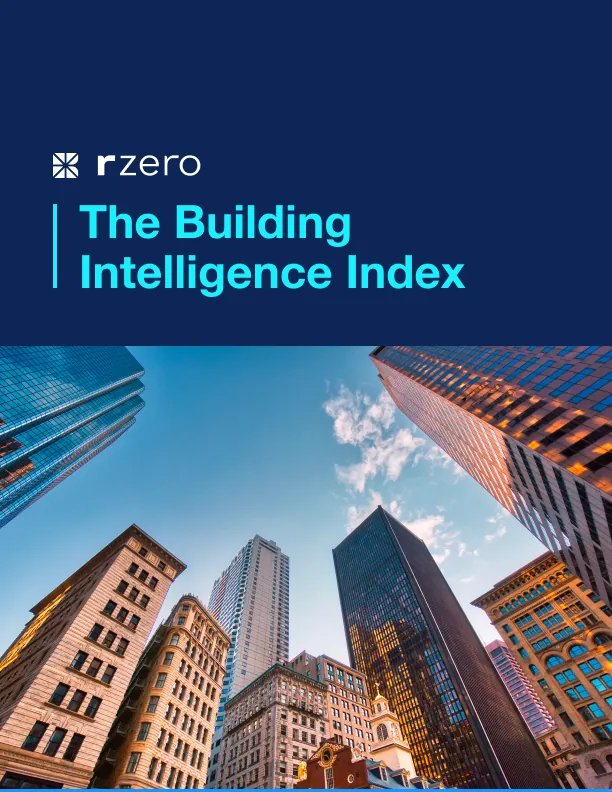
Why Air Quality Sensor Placement Matters
Whatever your reason for installing indoor air quality sensors — whether you’re focused on improving or proving air quality, or validating HVAC energy savings or filter upgrades — IAQ sensors are only as useful as where you place them.
The right positioning ensures you’re capturing meaningful, occupant-relevant data, not just system metrics. This helps:
- 🧩 Property Managers demonstrate proactive comfort management and tenant care
- 🛠️ Facilities Teams surface early signs of comfort drift or IAQ degradation—before they cause complaints
- 📊 Asset Managers & Executives support ESG and wellness goals with verifiable proof of indoor air quality
Even when not paired with R-Zero O-DCV or filtration upgrades, monitoring air quality correctly provides the visibility and credibility needed to protect lease value, occupant satisfaction, and portfolio performance.
Core Placement Guidelines
✔️ Focus on high-occupancy, high-value zones
- Where: Conference rooms, classrooms, open workspaces, lobbies, tenant suites
- Why: These are often the first places where comfort and air quality are noticed
- 💡 Property Manager Tip: Use these data points as proof of tenant care—not just internal benchmarks
📏 Mount in the breathing zone (3–6 ft / 0.9–1.8 m high)
- Why: Reflects real human exposure—not stale or stratified air
🎯 Prioritize zones tied to critical outcomes
- If you’re using:
- ODCV: Focus on areas where air volumes are being dynamically adjusted
- High-efficiency filters: Monitor spaces furthest from air handling units to confirm consistent filtration performance
- Why: IAQ monitoring becomes your verification layer—reassurance that improvements are working
💡 Facilities Team Tip: Data from these sensors help you show that you’re delivering greater comfort at the same time as reducing your workload and strain on older HVAC systems
🌐 Include a diverse zone mix for full visibility
- Where: Mix of core/perimeter, large/small, high/low traffic spaces
- Why: Avoid blind spots and build a holistic view of building performance
🚫 What to Avoid
- Near HVAC supply vents, returns, or windows – Causes skewed readings
- Corners or enclosed areas – Poor airflow = inaccurate data
- Over-saturating one area – Balance coverage across the floor/building
Sensor Data Parameters
- CO₂ – Causes drowsiness and stuffiness; indicator of ventilation adequacy
- PM2.5 – Monitors fine particulate levels from indoor/outdoor sources
- TVOCs – Detects chemical pollutants, cleaning residues
- Temperature & humidity – Core comfort drivers
💡 Use CO₂ + PM2.5 as your go-to proof points for healthy ventilation and effective filtration.
Facility-Specific Placement Tips
🏫 Schools & Educational Settings
- Prioritize: Classrooms, libraries, cafeterias, gymnasiums
- Why: High occupancy and long dwell time = higher CO₂ loads
- Tip: Place sensors away from whiteboards/windows to avoid dead zones, draft influence, and point pollution sources
🏢 Offices & Corporate Campuses
- Prioritize: Conference rooms, open workspaces, quiet/focus zones
- Why: Complaints often stem from perceived comfort imbalance or “stuffy” meeting rooms
- Tip: Monitor a mix of shared vs. individual zones to tailor HVAC strategy
🏥 Healthcare & Clinics
- Prioritize: Waiting areas, treatment rooms, recovery bays
- Why: Sensitive occupants + PM2.5 or VOC risks from medical materials
- Tip: Elevate PM2.5 monitoring as a key indicator of filtration effectiveness and IAQ assurance
(Monitoring OR pressure and PM, including finer materials like PM 1, requires further care beyond the scope of this discussion. Let’s chat.)
🏙️ Commercial & Multi-Tenant Properties
- Prioritize: Tenant suites, shared amenity spaces, lobbies
- Why: Comfort and perception affect renewal decisions
- Tip: Use suite-level IAQ trends to proactively flag potential tenant issues—before renewal talks
Final Takeaway
No matter why you’re deploying IAQ sensors—healthy buildings, smart HVAC, or tenant confidence—placement is critical. With smart deployment:
- You ensure meaningful, occupant-relevant data
- You validate both perceived and actual comfort
You build trust with tenants, decision-makers, and your team
More posts you might like
-

How to Pilot SecureAire Filters
A Step-by-Step Guide for Facilities Teams Cut HVAC energy use, extend filter life, and improve indoor air quality—without disrupting operations. Piloting R-Zero’s SecureAire filters is a smart move for facilities teams seeking to enhance HVAC performance and air quality while achieving energy savings. This guide walks you through how to plan and execute a data-driven […]
-

Smarter ventilation, lower cost: a guide to reducing HVAC energy without disruption
This guide is for energy leads and operations teams evaluating R-Zero. It outlines how our platform delivers measurable HVAC energy savings—not through expensive capital upgrades or disruptive equipment replacements, but by intelligently reducing airflow where it’s not needed and improving the efficiency of air movement through smarter filtration. Static schedules vs CO₂ vs occupancy-driven control […]
-

The Energy Efficiency FAQ: Clear Answers to Common Questions About Smarter Buildings
When people first learn about R-Zero’s platform, they often have smart, valid questions, and a few common concerns. Some are based on past experiences with other systems. Others come from how building operations used to work. This FAQ is here to give you clear, straightforward answers. Just helpful context on how R-Zero fits into your […]

